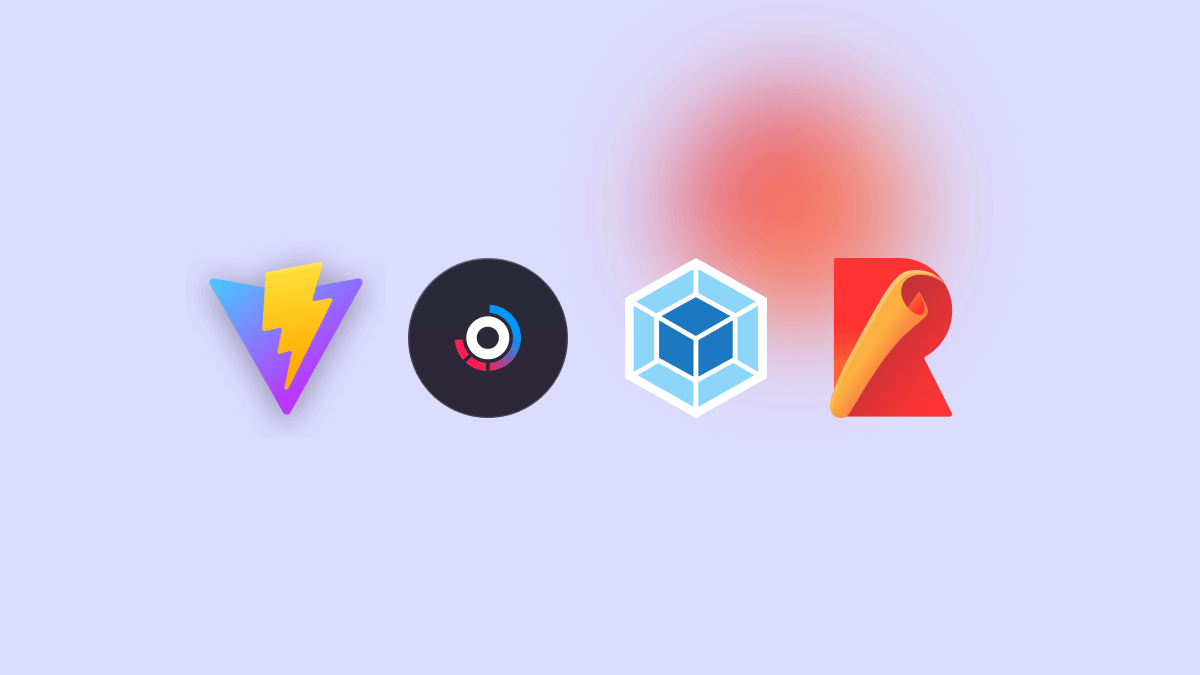So, what are build tools, exactly? Well, they’re a set of tools that help you automate repetitive tasks, optimize your code, and improve your workflow. There are three main categories of build tools: task runners, bundlers, and compilers.
Task runners are tools that automate repetitive tasks such as testing, linting, and minifying code. Bundlers allow developers to bundle multiple files into one file, reducing load times and improving performance. Compilers enable developers to write code in one language and compile it into another, such as using TypeScript to write JavaScript code.
Using build tools has several benefits to improve the development workflow, including reducing development time, improving code quality, and streamlining the deployment process.
By automating repetitive tasks, optimizing code, and providing real-time feedback on errors and code quality, build tools help improve the overall developer experience and make development less stressful.
Let’s look at the currently most popular build tools that front-end developers are using:
| Rank | Tool | Description | Stars |
|---|---|---|---|
| 1 | Vite | Next generation frontend tooling. It’s fast! | 53.4k |
| 2 | Turbo | Incremental bundler and build system optimized for JavaScript and TypeScript, written in Rust – including Turbopack and Turborepo. | 19.8k |
| 3 | swc | SWC is a super-fast TypeScript / JavaScript compiler written in Rust. | 26.4k |
| 4 | Nx | Nx is a next generation build system with first class monorepo support and powerful integrations. | 16.7k |
| 5 | Rome | Rome is a formatter, linter, bundler, and more for JavaScript, TypeScript, JSON, HTML, Markdown, and CSS. | 22.6k |
| 6 | esbuild | An extremely fast bundler for the web | 34.7k |
| 7 | Lerna | Lerna is a fast, modern build system for managing and publishing multiple JavaScript/TypeScript packages from the same repository. | 34.3k |
| 8 | Webpack | Webpack is a module bundler. Its main purpose is to bundle JavaScript files for usage in a browser, yet it is also capable of transforming, bundling, or packaging just about any resource or asset. | 62.6k |
| 9 | Parcel | The zero configuration build tool for the web. | 42.1k |
| 10 | Rollup | Next-generation ES module bundler | 23k |
If we look back at the last year, the popularity of Vite has been on the rise and has surpassed its predecessor, Snowpack. Along with Vite, Nx and Turborepo are the rising build tools for monorepo, and Nx has recently taken over the maintenance of Lerna.
Although Babel is still popular, swc and esbuild have been adopted by many projects and meta-frameworks for better build and transpilation performance.
Last year, during the Next.js Conf, Vercel announced Turbopack, a new and fast bundler in Rust, and Rome has released its first stable version, including a linter and formatter. The adoption of Rome is currently low, but it could increase in the coming year.
Alright, let’s move on to looking at each tool individually.
1. Vite
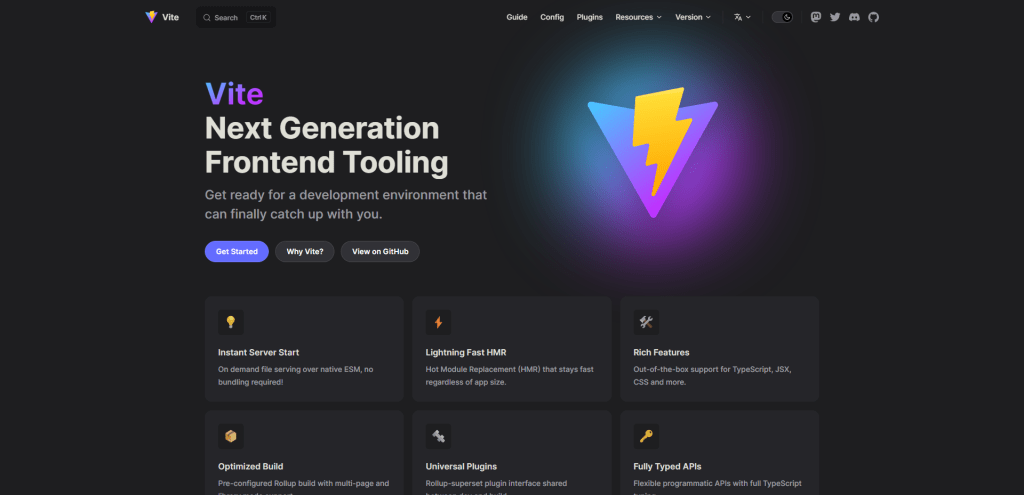
Vite is a modern build tool that provides fast and efficient development workflows for web applications. Developed by Evan You, the creator of the popular front-end framework Vue.js, Vite is designed to be flexible and adaptable, with support for a wide range of front-end frameworks and libraries.
Vite offers a number of benefits over traditional build tools like Webpack and Rollup, including faster build times and hot module replacement. Vite achieves these benefits by using a modern development server that leverages native ES modules in the browser. This allows Vite to provide fast and efficient development workflows, with instant updates and live reloading.
Key Features of Vite:
- Fast builds
- First-party hot module replacement (HMR) integrations for Vue Single File Components and React Fast Refresh
- Supports importing multiple modules from the file system
- Supports CSS @import inlining via PostCSS plugins
- Supports CSS modules
- Lazy-loading of matched files via dynamic import
Vite also offers support for a wide range of front-end frameworks and libraries, including Vue.js, React, Angular, and Preact. This makes Vite a great choice for developers who work with multiple frameworks, as it provides a consistent and flexible development workflow.
2. Turborepo
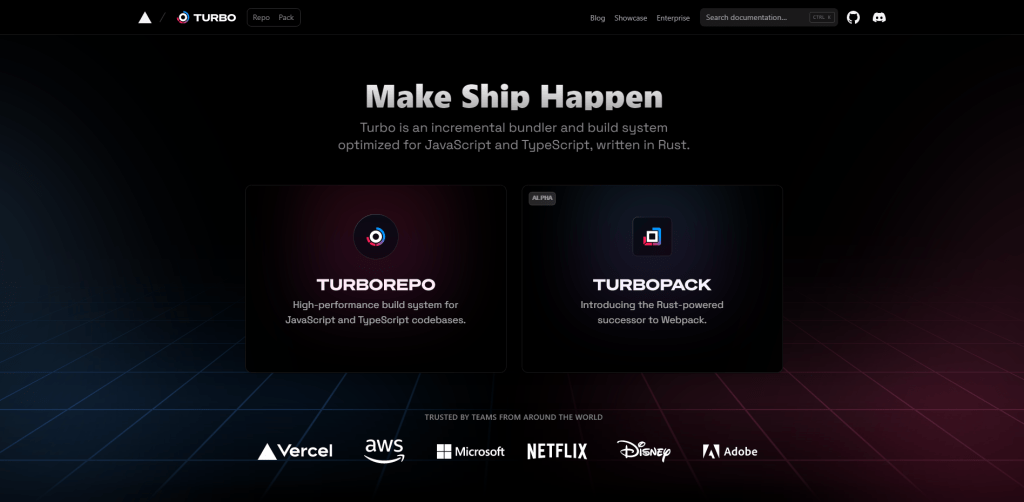
Turborepo is a high-performance build system designed specifically for TypeScript and JavaScript projects. It offers a range of powerful features, such as fast incremental builds, local and distributed computation caching, local task orchestration, dependency graph visualization, and source code sharing. One of the key features of Turborepo is its ability to adapt and scale incrementally, making it easy to add to an existing codebase in just a few minutes. Turborepo improves task speed through intelligent scheduling, minimizing idle CPU usage.
Remote caching is a vital feature of Turborepo that enables builds to achieve lightning-fast build times by sharing compiled computations and code artifacts on Vercel. This feature allows for efficient sharing of caches among team members and reduces the need for constant re-compiling, re-testing, or re-running of unchanged code.
In addition to remote caching, Turborepo provides support for pruning for all major package managers and supports polyrepo. It also features incremental builds, context-aware hashing, zero runtime overhead, pruned subsets, and integration with Lerna.
Turborepo is ideal for projects with complex interdependencies between scripts, a need to execute tasks in parallel, or a desire for top-level dependency management, incremental builds, uniform linting configuration, caching of build steps, and out-of-the-box hot module reloads for Next.js applications.
3. swc
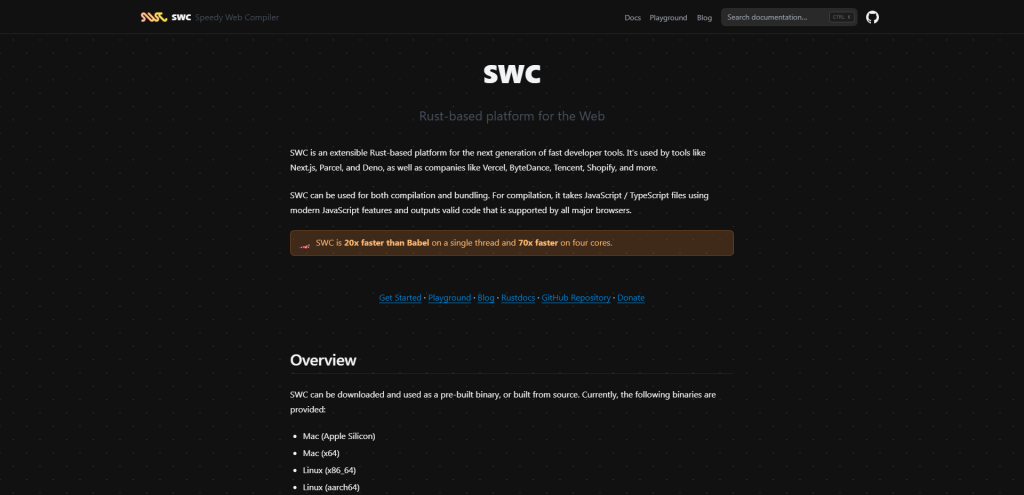
SWC (stands for “Speedy Web Compiler”) is a fast and modern JavaScript/TypeScript compiler that provides a faster and more efficient alternative to Babel. Developed by the Rust programming language community, SWC is designed to be a drop-in replacement for Babel, with faster compilation times and better performance.
SWC achieves its fast compilation times by using a Rust-based compiler that is significantly faster than Babel’s JavaScript-based compiler. This allows SWC to provide faster and more efficient builds, with significant improvements in build times and overall performance.
SWC also offers support for a wide range of modern JavaScript and TypeScript features, including async/await, decorators, and class properties. This makes SWC a great choice for developers who work with modern web frameworks and libraries.
4. Nx
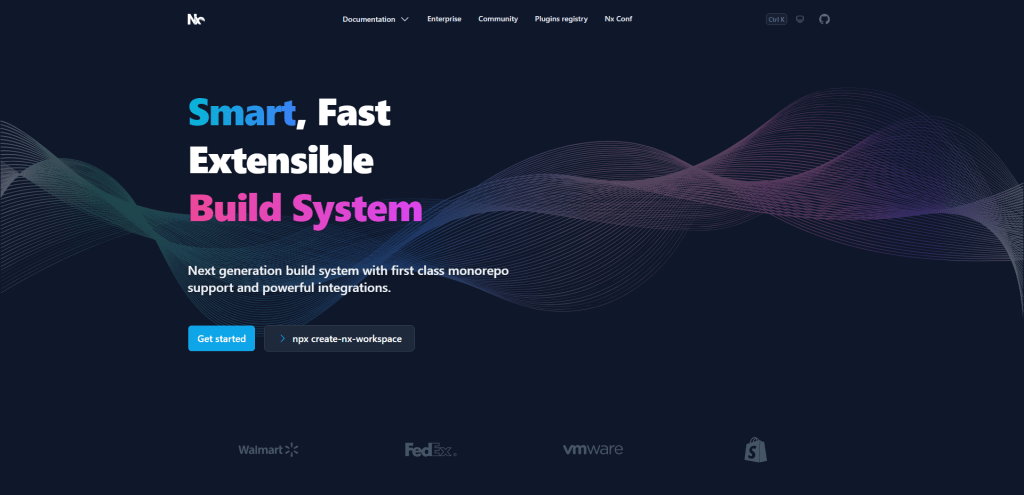
Nx is a powerful and extensible set of tools for building monorepo-based applications. Developed by the team behind Angular, Nx provides a number of benefits over traditional build tools, including faster builds, improved code sharing, and better team collaboration.
Nx achieves its faster builds by leveraging the power of monorepos. With Nx, you can organize your code into a single repository that contains all of your applications, libraries, and shared code. This allows Nx to perform incremental builds that only rebuild the parts of your code that have changed, resulting in faster and more efficient builds.
Nx also offers support for a wide range of front-end frameworks and libraries, including Angular, React, and Vue.js. This makes Nx a great choice for developers who work with multiple frameworks and want to share code between them.
In addition, Nx provides a number of tools for improving team collaboration, including dependency graph visualization, code linting, and code formatting. This makes it easier for teams to work together and ensures that code is consistent and maintainable.
5. Rome
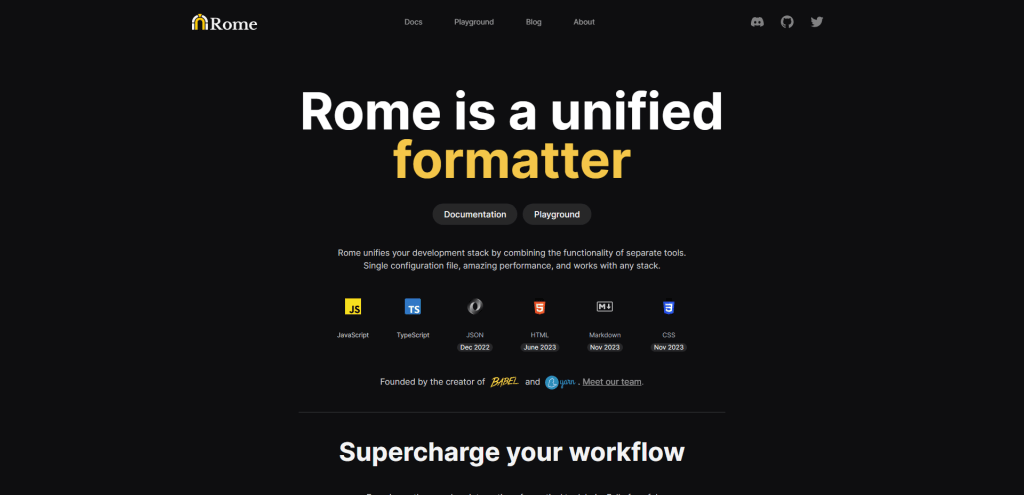
Rome is an all-in-one toolchain for building modern JavaScript applications. Developed by the team at Facebook, Rome aims to provide a unified and streamlined approach to building, testing, and deploying JavaScript applications.
Rome offers a number of benefits over traditional build tools, including faster build times, improved error handling, and better performance. Rome achieves these benefits by using a modern and modular architecture that is designed for performance and scalability.
In addition, Rome provides a number of tools for improving developer productivity, including automated linting, formatting, and testing. This makes it easier for developers to focus on writing high-quality code, rather than worrying about the details of the build process.
6. esbuild
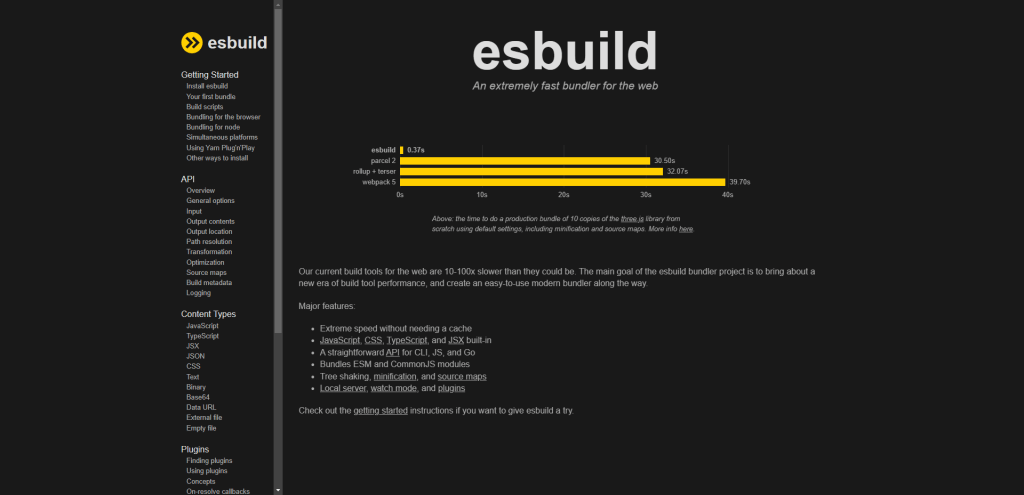
esbuild is a blazing-fast JavaScript bundler and minifier that offers significant improvements in build times and overall performance. Developed by Evan Wallace, esbuild aims to be the fastest JavaScript bundler and minifier in the market, with build times that are up to 100 times faster than its competitors.
esbuild achieves its fast build times by using a Go-based compiler that is significantly faster than the JavaScript-based compilers used by other bundlers. This allows esbuild to provide near-instantaneous build times, even for large and complex applications.
esbuild also offers support for a wide range of modern JavaScript features, including JSX, TypeScript, and CSS. This makes esbuild a great choice for developers who work with modern web frameworks and libraries.
In addition, esbuild provides a number of tools for improving developer productivity, including code splitting, tree shaking, and dead code elimination. This makes it easier for developers to focus on writing high-quality code, rather than worrying about the details of the build process.
7. Lerna
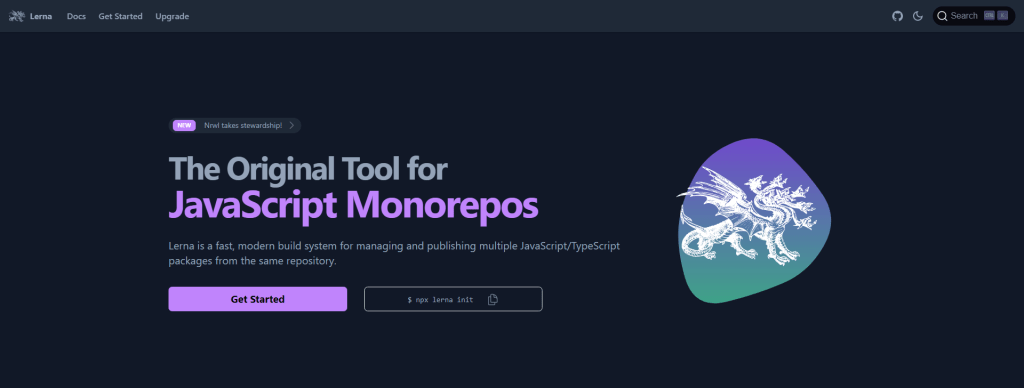
Lerna is a popular tool for managing multi-package repositories with git and npm. Developed by the team at Babel, Lerna provides a number of benefits for developers working with large codebases, including improved collaboration, better dependency management, and faster release cycles.
Lerna achieves its benefits by providing a number of tools for managing packages within a monorepo, including versioning, publishing, and testing. With Lerna, you can manage your packages as a single entity, with shared dependencies and consistent versioning.
In addition, Lerna provides a number of tools for improving collaboration, including changelogs, release notes, and automated testing. This makes it easier for teams to work together and ensures that code is consistent and maintainable.
8. Webpack
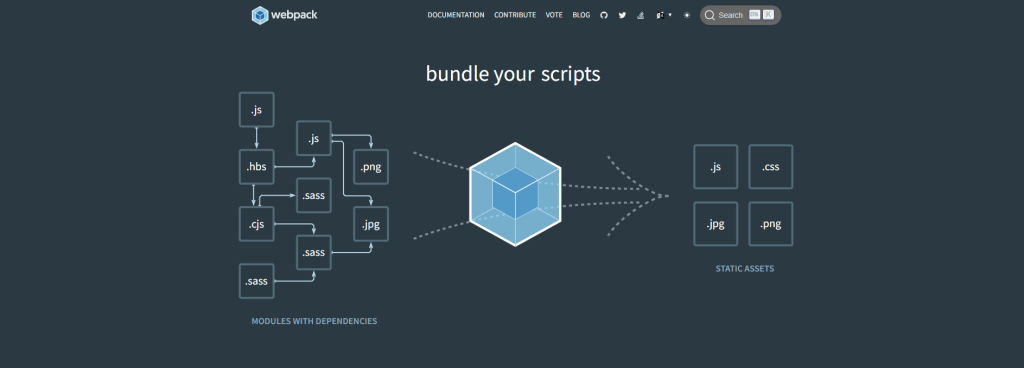
One of the key features of Webpack is its ability to handle complex module dependencies. Webpack can dynamically load and manage dependencies, which means that you can import code from other files in a way that is easy to manage and maintain. Additionally, Webpack can analyze your code and create a dependency graph, which can help you identify and manage complex module interdependencies.
Webpack also includes a powerful plugin system that allows you to extend its functionality and customize the build process to suit your specific needs. For example, there are plugins available that can help you optimize your code, minimize the size of your output files, and even generate HTML templates.
Another major benefit of Webpack is its support for modern web development practices. For example, Webpack can handle modern JavaScript features such as ES6 modules, which allows you to write cleaner and more maintainable code. Webpack can also integrate with popular front-end frameworks such as React and Vue.js, which makes it an ideal choice for building modern web applications.
9. Parcel
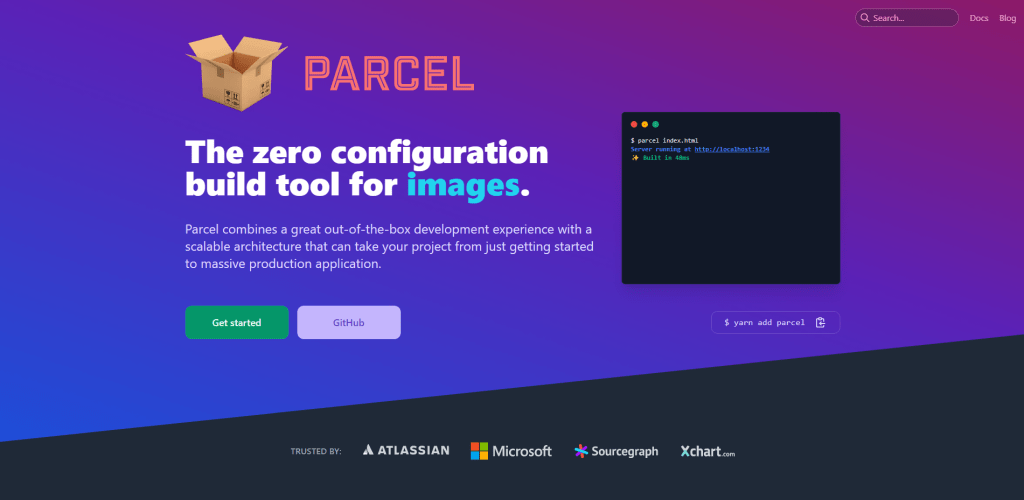
Parcel is an open-source, zero-configuration build tool that aims to eliminate the complexity and configuration required by traditional bundlers like Webpack and Browserify. Parcel uses a multi-core compilation to provide fast and efficient builds, making it an ideal choice for small to medium-sized projects.
Parcel also includes hot module replacement (HMR), which enables developers to make changes to their code and see the results instantly in the browser without refreshing the page. HMR also preserves the state of the application, making it possible to retain user input and other important data during development.
One of the key benefits of using Parcel is its ability to detect and install the necessary dependencies for a project automatically. This means that developers can focus on writing code instead of managing dependencies and configurations. Additionally, Parcel offers a flexible plugin system that allows developers to customize their builds by adding or removing specific features based on their project requirements.
10. Rollup
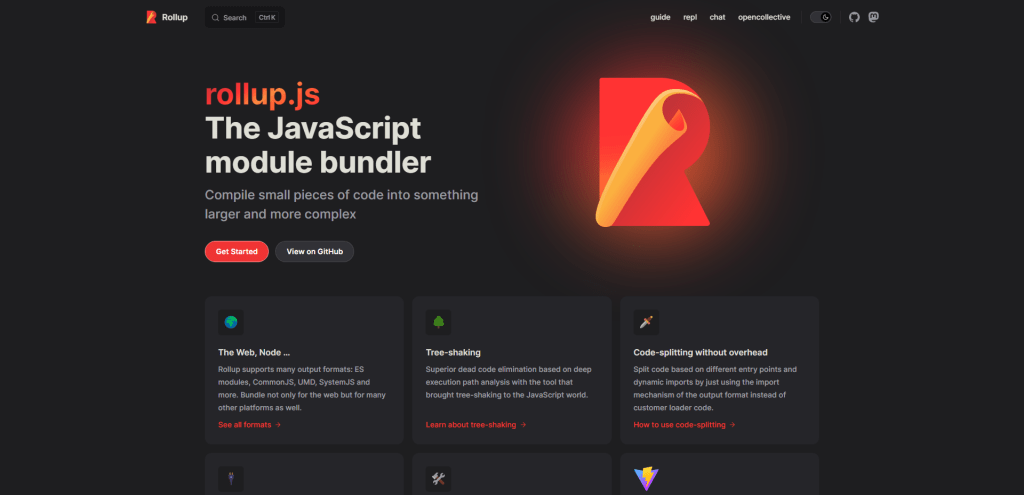
Rollup is a module bundler that allows developers to create smaller and more efficient JavaScript bundles for their web applications. The basic idea behind Rollup is to take a set of input modules, analyze them, and then generate a single output file that includes only the code needed to run the application. This approach can significantly reduce the size of the final JavaScript bundle and improve performance.
One of the key features of Rollup is its ability to perform tree-shaking. This is the process of analyzing the dependencies between modules and removing any code that is not actually used in the application. Tree-shaking can result in significant reductions in file size, as unused code is removed from the final bundle.
Rollup is designed to work well with modern JavaScript modules, such as those written in ES6 or TypeScript. It can also handle CommonJS modules, which are used by many popular libraries and frameworks. Rollup provides a plugin architecture that allows developers to extend its functionality and integrate with other tools and workflows.
Rollup is highly configurable, with many options and settings that can be customized to suit the needs of a particular project. For example, developers can choose to output code in different formats, such as CommonJS, AMD, or ES modules. They can also specify which parts of the code should be treated as external dependencies, and which should be included in the bundle.
Summary
It’s important to learn build tools even if you’ve never used them before because they are essential tools for modern web development. By automating repetitive tasks and optimizing code, build tools can help you write better code more quickly and efficiently.
Some of the benefits of using build tools include the following:
- Automated workflows: Automate repetitive tasks, such as compiling code, compressing files, and optimizing images. This saves time and reduces the risk of human error.
- Code quality: Build tools can help ensure that code is formatted correctly, follows best practices, and is optimized for performance.
- Modularity and scalability: You can organize code into modules, making it easier to manage and scale projects over time.
- Faster development: Build tools can speed up the development process by providing features like live reloading, which automatically refreshes the browser when changes are made to the code.
- Compatibility: Build tools can help ensure that code is compatible with different browsers and devices, improving the user experience.
They are also a key part of the development workflow for many companies, so having experience with build tools can be an asset when applying for jobs or working on collaborative projects.
